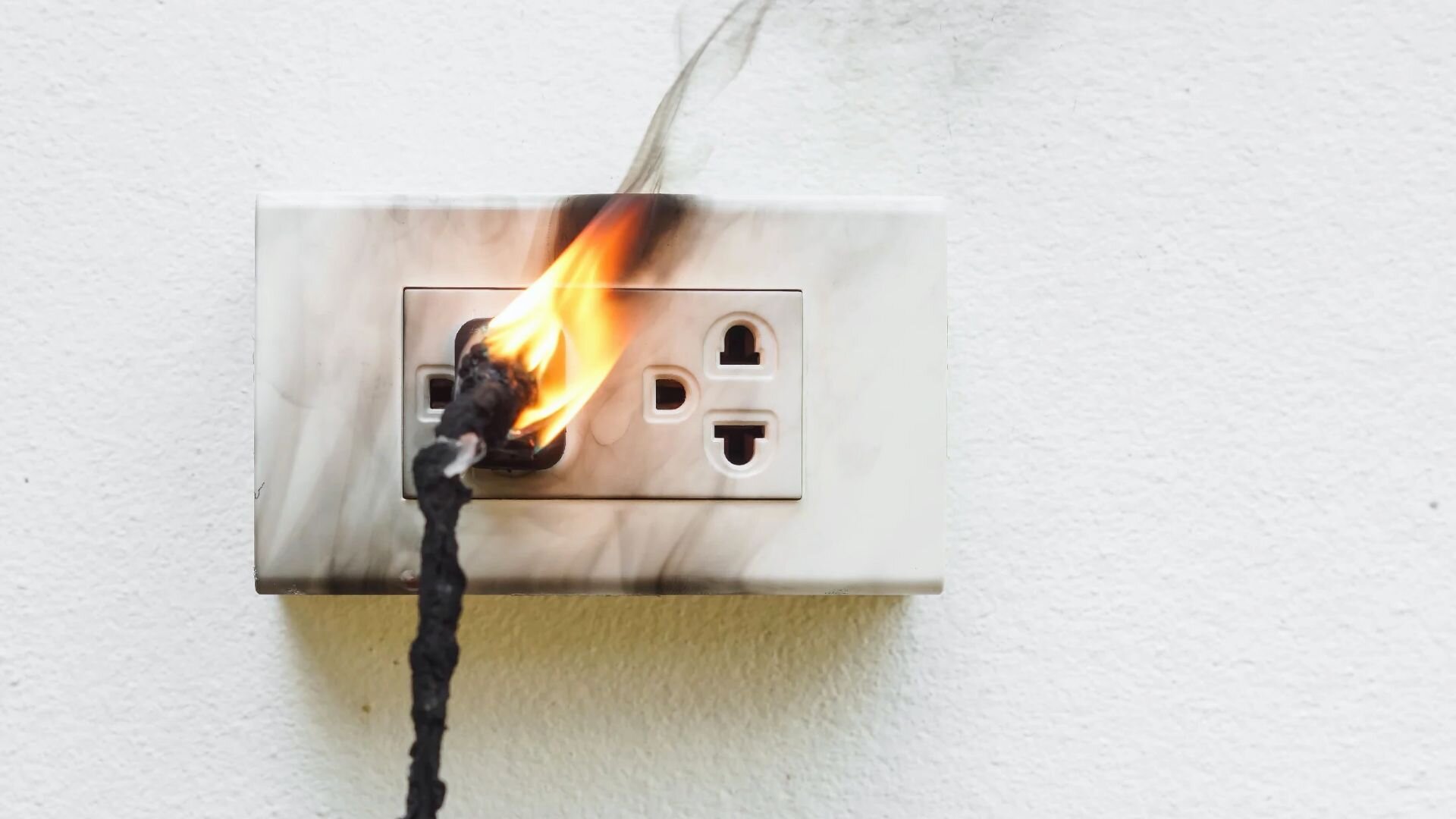Wall socket maintenance.
Wall sockets and switches are an integral part of our daily lives. They power everything, from your phone chargers to household appliances. Proper awareness and maintenance of their condition is paramount to ensuring safety and functionality.
How to maintain wall sockets.
Regular maintenance can extend the life of your wall sockets and switches and can prevent electrical hazards. Here are a few simple tips:
Inspect visually:
Periodically check your wall plugs and switches for any visible damage, such as burns, discoloration and loose parts.
Tighten loose sockets:
If the socket feels loose or wiggles, it could cause a poor connection, leading to potential overheating. Tighten the screws on the socket or replace it if necessary.
Clean carefully:
Dust and debris can accumulate over time. Use a dry cloth or a small brush to clean around the socket gently. Never use water or cleaning liquids as they can cause electrical shorts.
Avoid overloading:
Plugging in too many devices at once can cause overheating and damage. Use power strips with circuit breakers if you need more outlets.
Check for wear:
If the socket or switch is physically worn out, it may no longer function properly, so it’s time to replace it.
How to spot faulty wall sockets and switches.
Knowing when your sockets and switches need attention can prevent accidents. Here are common signs of faulty sockets:

Sparks or Arcing: If you notice sparks when plugging or unplugging a device, it’s a clear sign of a problem.
Discoloration or Burn Marks: Brown or black marks near the socket indicate overheating, which can lead to fire hazards.
Loose or Wobbly Socket: A socket that is not securely fastened to the wall can lead to a poor connection or electrical short.
No Power: If a socket isn’t providing power, it could be a wiring issue, or the socket may need replacing.
Burning Smell: A burning odor from the socket or switch is a major red flag, suggesting a short circuit or overheating.
Frequent Tripping of Circuit Breaker: If the breaker trips regularly when using a specific socket, it’s time to check the wiring or the socket itself.
How to replace a wall socket:
Replacing a wall socket is a relatively simple process, but it’s essential to do it safely. Here’s a quick step-by-step guide:
Step 1: Turn Off the Power Locate your home’s circuit breaker panel and turn off the power to the specific socket you’re working on. Always double-check by testing the socket with a voltage tester.
Step 2: Gather Tools and Materials You’ll need a screwdriver, voltage tester, replacement socket, and wire cutters/strippers.
Step 3: Remove the Socket Cover Use a screwdriver to remove the cover plate over the socket.
Step 4: Unscrew the Socket from the Wall Remove the screws securing the socket to the electrical box. Gently pull the socket out.
Step 5: Test the Wires Use a voltage tester to ensure no current is flowing to the socket before you proceed.
Step 6: Disconnect the Wires Take note of where each wire is connected to the socket. Typically, the black or red wire connects to the brass screw, the white wire to the silver screw, and the green wire (ground) to the green screw. Use a screwdriver to remove each wire.
Step 7: Prepare the New Socket Take your new socket and prepare it by loosening the screws that will hold the wires.
Step 8: Connect the Wires Connect the wires to the corresponding screws on the new socket. Tighten the screws to secure them properly.
Step 9: Secure the Socket Gently push the socket back into the wall box and screw it in place.
Step 10: Replace the Cover Plate Attach the cover plate over the new socket and tighten it securely.
Once you’ve followed these steps, you can turn the power back on and test the new socket with a device to ensure it works correctly.
If you’re confident in your skills, replacing a faulty wall socket is a manageable task, but always prioritize safety and, when in doubt, consult a professional electrician. With the right knowledge and tools, you can keep your electrical system functioning safely and efficiently for years to come.

